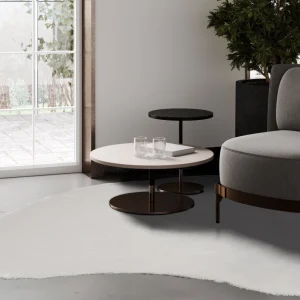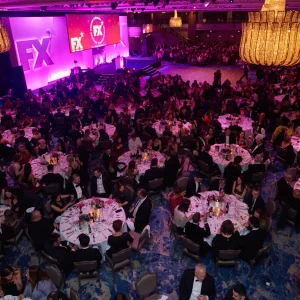Prairie House, Illinois

Designed by ORAMBRA, The Office for Robotic Architectural Media & The Bureau for Responsive Architecture in Chicago, the Prairie House in Illinois (2011) implements new tensegrity systems and cladding technologies. Through the use of thermo or photo-chromatic inks, the colour of the interior membrane of the building becomes lighter on warmer days and darker on colder days. The result is a piece of responsive architecture that both radically cuts carbon emissions and presents an elegant new aesthetic.
Future Venice

Photo: Christian Kerrigan
As part of the Future Venice Project, Rachel Armstrong, one of the leading figures in the field of Architecture & Synthetic Biology, has proposed that protocells could be used to grow an artificial limestone reef reinforcing the foundations of Venice. Protocells are chemical agents that behave in lifelike ways (such as growth and multiplication). They can therefore be manipulated to both form and sustain a material, in this case a reinforcing 'biocrete' for the foundations of Venice. This application of 'living technology' could see huge changes in our approach to architecture and sustainability in the coming years.

Photo: Christian Kerrigan

Photo: Christian Kerrigan
The HygroSkin Meteorosensitive Pavilion

Photo courtesy of the University of Stuttgart
Recently launched by a team at the University of Stuttgart led by Professor Achim Meges, this new mode of climate-responsive architecture uses the naturally responsive capacity of a basic material, wood, to allow a simple, dynamic manipulation of a building's humidity. Requiring no additional source of energy or mechanical control, the HygroSkin uses the natural elasticity of wood in relation to moisture content to adjust the movement of apertures embedded within concave plywood sheets.

Photo courtesy of the University of Stuttgart

Photo courtesy of the University of Stuttgart
Radiant Soil

Photo: ©PBAI
The Canada-based architect Philip Beesley first presented his Hyozolic series of 'metabolic architecture' installations in 2008: immersive environments designed to react to movement, and capable of regeneration and growth. The installation Radiant Soil was presented at Espace EDF in Paris this summer, featuring suspended, plant-like structures made from biomimetic components of polymer, metal and glass, each with a near-living carbon-capture metabolism. Shape-memory mechanisms allow the structure to react to viewers as they approach, setting off bursts of light that stimulate protocells and trigger chains of movement.

Photo: ©PBAI

Photo: ©PBAI
Abu Dhabi Central Market

Photo: Nigel Young/Foster + Partners
In 2010, Hoberman Associates applied their Permea system of exterior shading roofs to three public squares within the Abu Dhabi Central Market retail complex by Foster + Partners. Working from a dynamic grid reacting to levels of sunlight, the kinetic design of the shading roof resembles a traditional coffered Islamic roof.

Photo: Nigel Young/Foster + Partners

Photo: Nigel Young/Foster + Partners
Echoviren Pavilion

Photo: Smith | Allen
This summer, Californian practice Smith | Allen, presented the first entirely 3D printed architectural structure, a modular, site-responsive pavilion that changes shape in accordance to the shapes and forms of its forest surroundings. The structure is composed from 585 interlocking components made from plant-based bio-degradable plastics.

Photo: Smith | Allen

Photo: Smith | Allen





